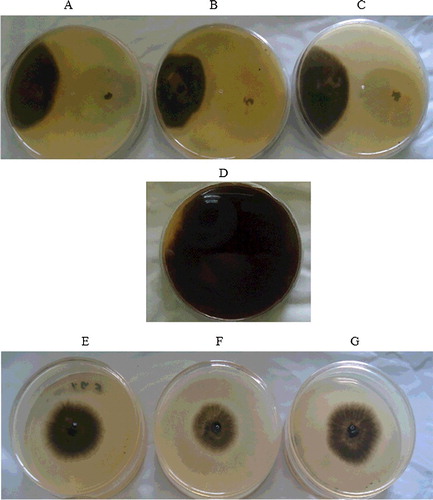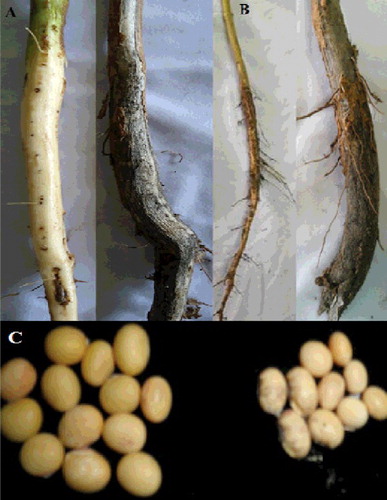Figures & data
Table 1. Inhibition percentage of radial growth of M. phaseolina colonies affected by T. harzianum isolates in the in vitro dual culture and volatile production tests.
Figure 1. Dual culture test (A–C) and volatile metabolites production test (E–G) on PDA plates showing the mycelial growth inhibition.

Table 2. Sclerotia population of M. phaseolina pathogen in different regions of Mazandaran Province.
Table 3. Soil physical and chemical properties from the experimental field (Jooybar).
Table 4. Analysis of variance for the field assessment studies on the efficacy of T. harzianum isolates as biological control agents against M. phaseolina charcoal rot pathogen.
Table 5. Evaluation of the efficacy of T. harzianum isolates as biological control agents against M. phaseolina in the soil incorporation and seed inoculation techniques.


